If you’ve spent time in New York City’s west side, you might have noticed an aircraft carrier docked alongside the many piers of the Hudson. This preserved US Navy aircraft carrier, the USS Intrepid, serves as a museum of military history. Back in October 2023, I had the chance to visit and take some photos. I actually walked there from where I was staying, along a nice path on the Hudson River side of Manhattan.
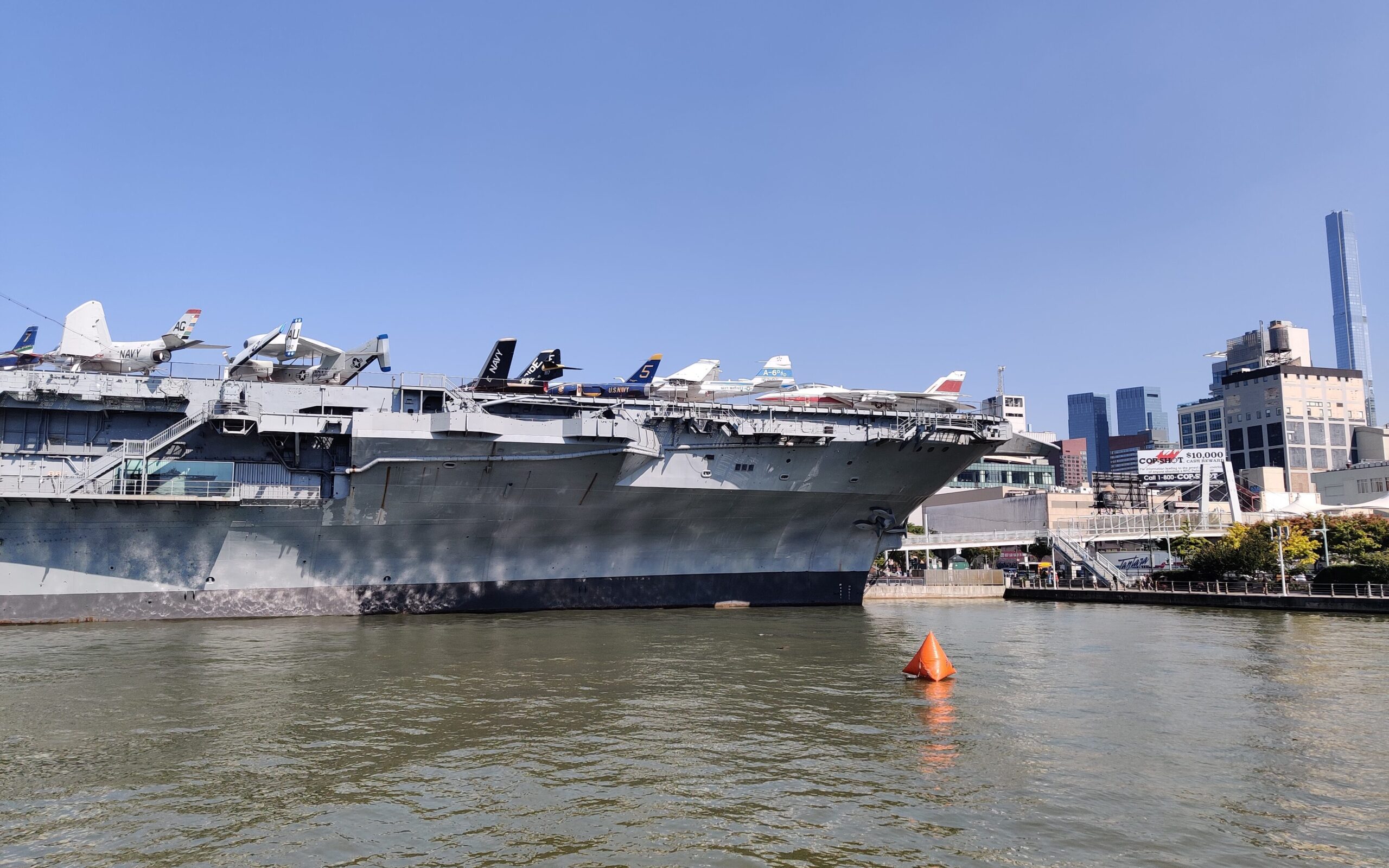
While the Intrepid is now a very unique museum space in stunning NYC, she is significant for participating in both WWII (Pacific Theater) and the Vietnam War. The Intrepid was part of the decisive Battle of Leyte Gulf, the largest naval battle of WWII, which saw the use of kamikaze attacks by the Japanese Navy for the first time. The Intrepid herself was hit by kamikaze attacks four times.
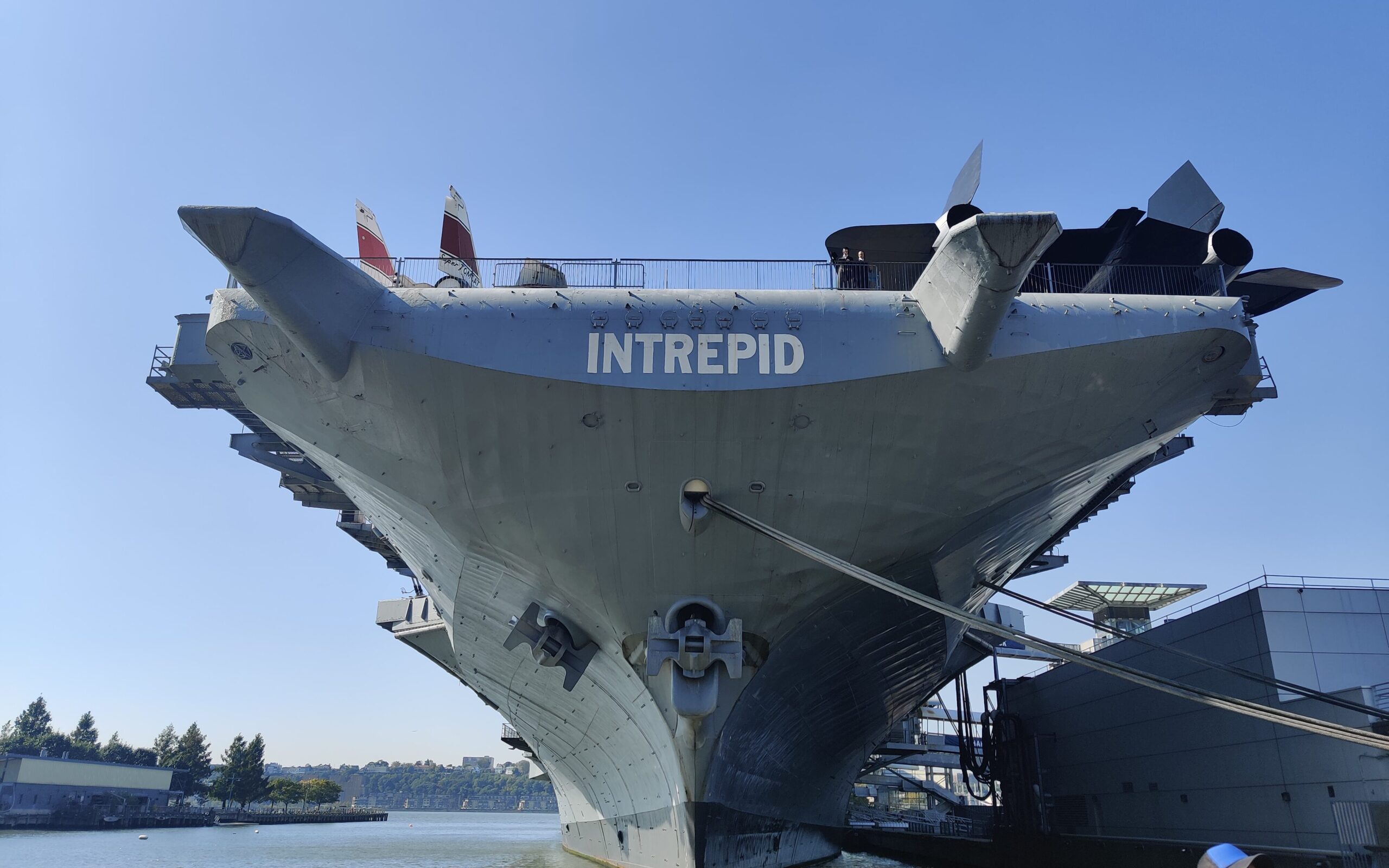
Learning about military aircraft is one of my interests, so I really enjoyed my visit to the Intrepid. Though there is more to the museum than old airplanes, they are the most obvious attraction here. If you visit, you will enter through one of the lower decks, which houses a few aircraft. Now, I get to share my some of my airplane photos and show off my knowledge!
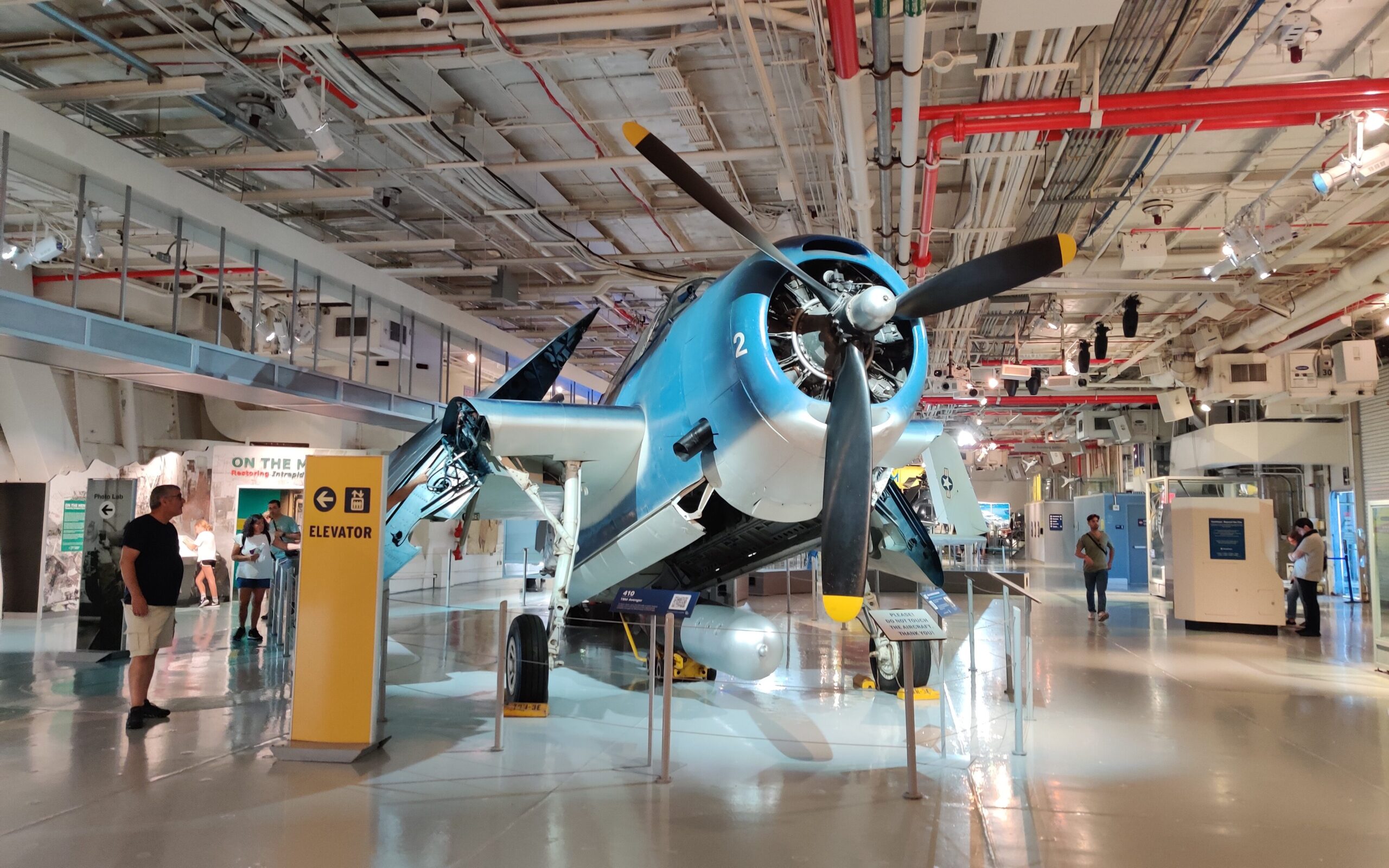
Throughout this floor, there are even scale models of a few planes and the carrier itself, depicting its past iterations, when it carried full decks of warplanes.
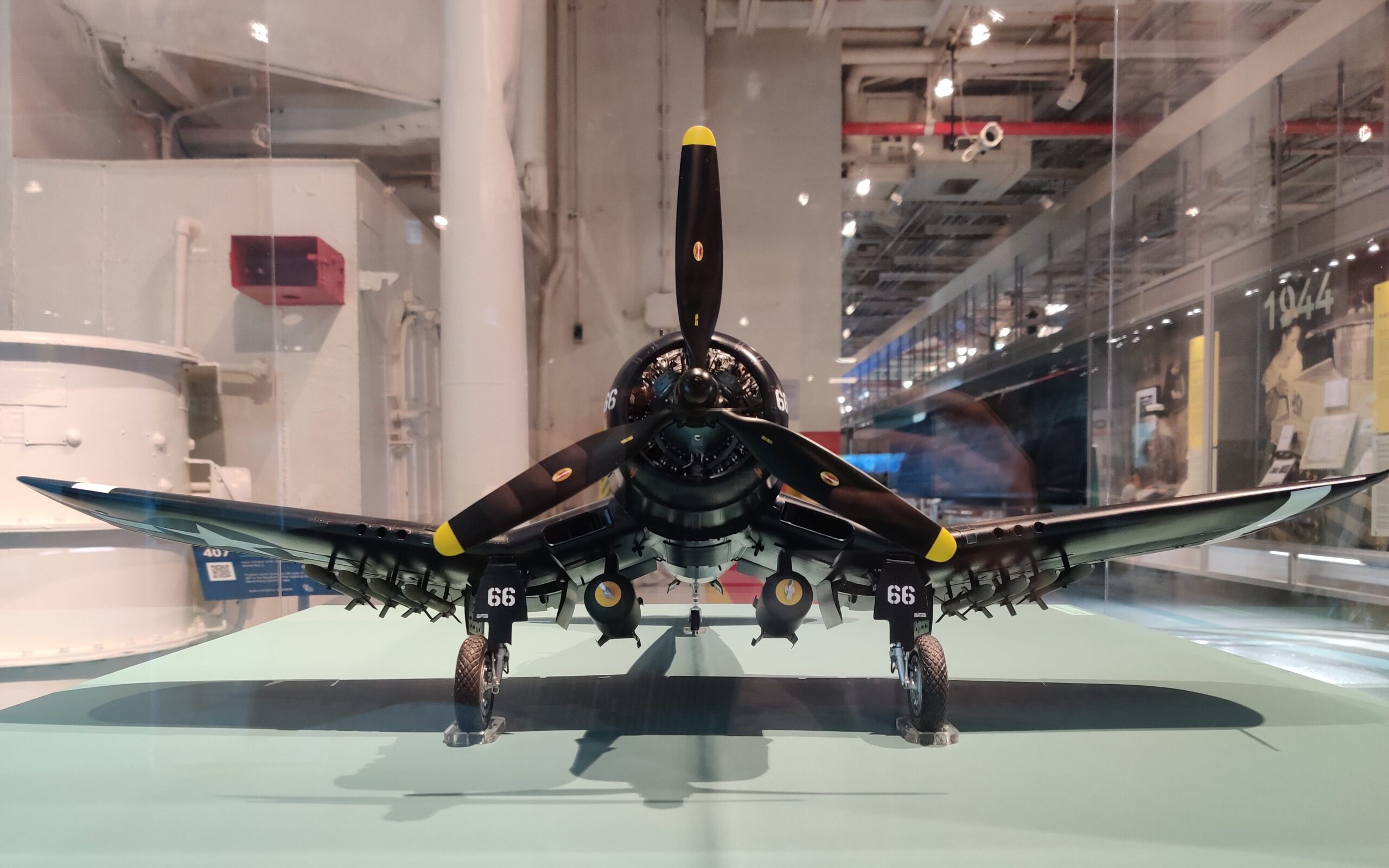
From a historical perspective, while propeller planes were pivotal throughout WWII, they were for the most part made obsolete by jet aircraft by the time of the Korean War (circa 1950’s). In addition to jet engines, jet fighters became distinctive from propeller-driven predecessors by employing swept-back wing design, an evolution which took more than a few concepts and tests. Generally, jets are heavier, faster, and able to carry more weapons than propeller driven planes. They are also more dangerous, when considering that carrier decks offer only so much space to land.
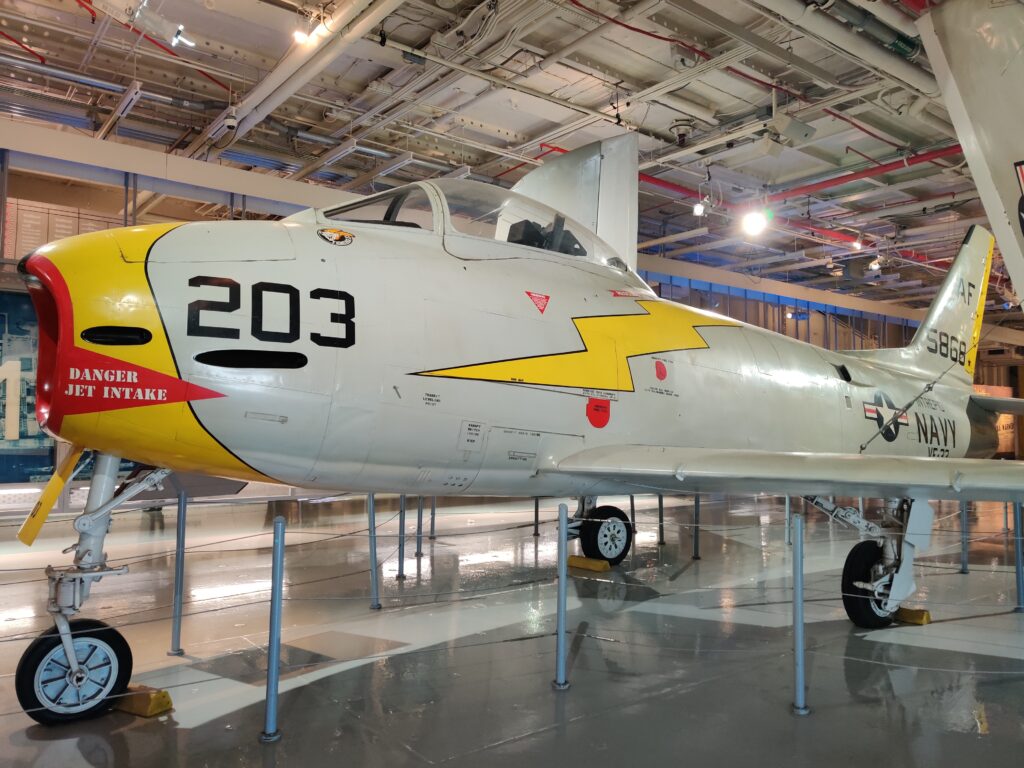
There are also helicopters on display in/on the Intrepid. Admittedly, I know very little about helicopters.
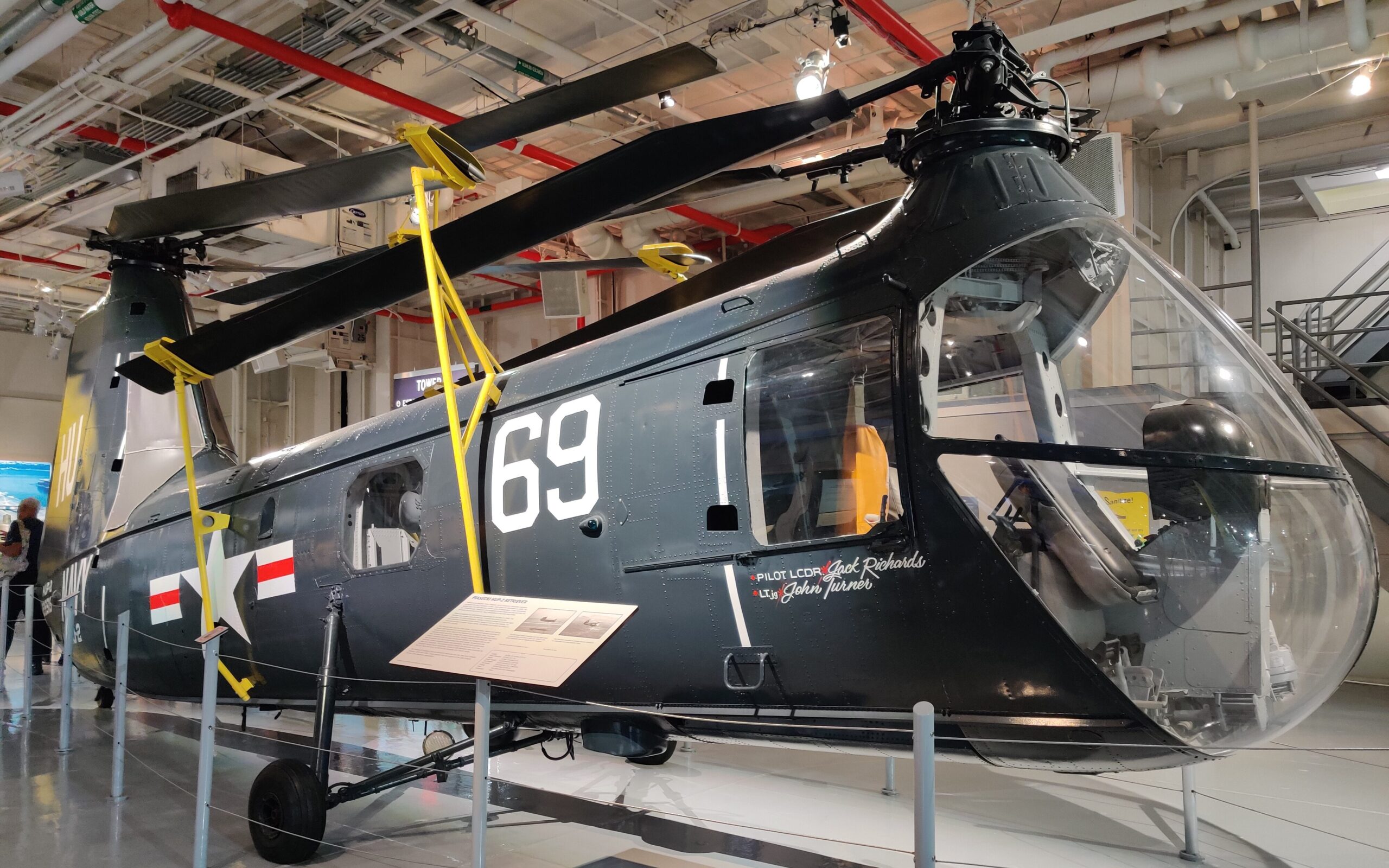
By the time of the Vietnam War, jet aircraft technology and understanding had rapidly advanced, leading to many new designs and roles.

On one of the lower decks, all the way at the end, you can step out of the inner deck of the Intrepid. There is a decent view of the river and New Jersey from here. I had the space all to myself at this spot.
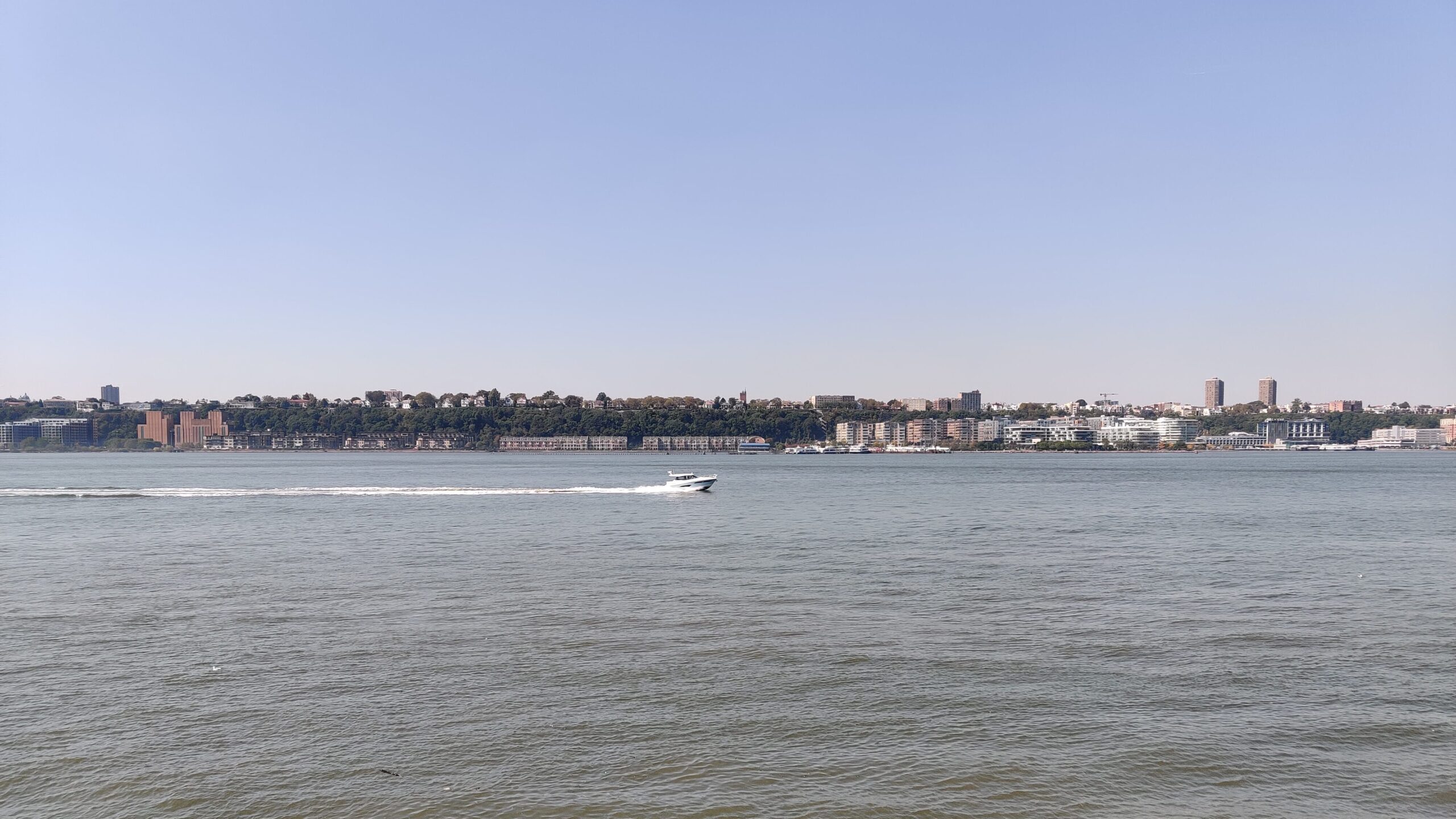
I counted three different scale models of the USS Intrepid on display (with accompanying scale model airplanes), within the Intrepid.

There is even a wonderful recreation of the Intrepid in LEGO form! It is in 1:40 scale, measuring 22 feet in length, over 500 pounds in weight, and is made of approximately 250,000 pieces. The model was built by artist Ed Diment, known as “Lego Monster”.
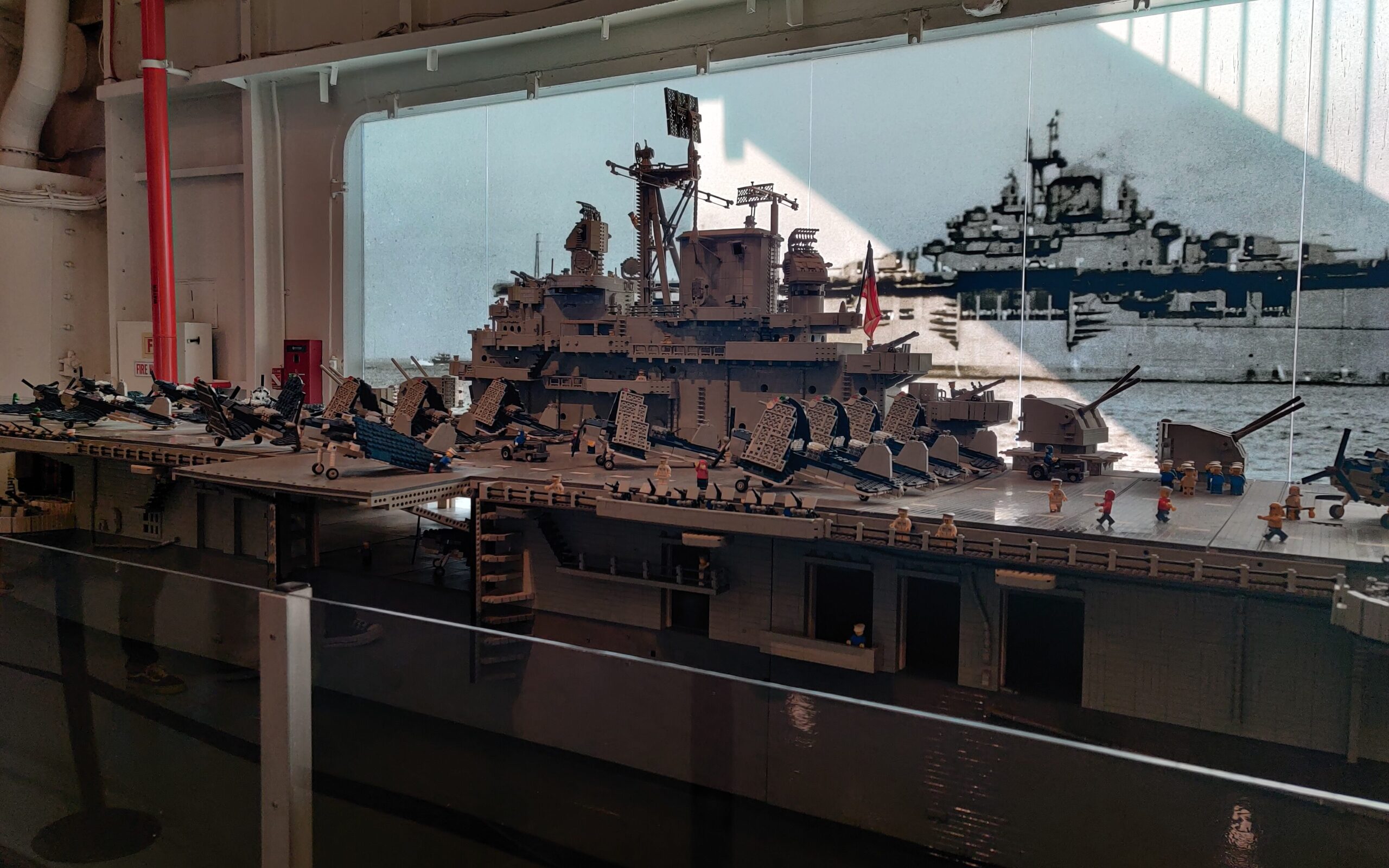
On the second inner deck, there are some preserved spaces of the living quarters and such.
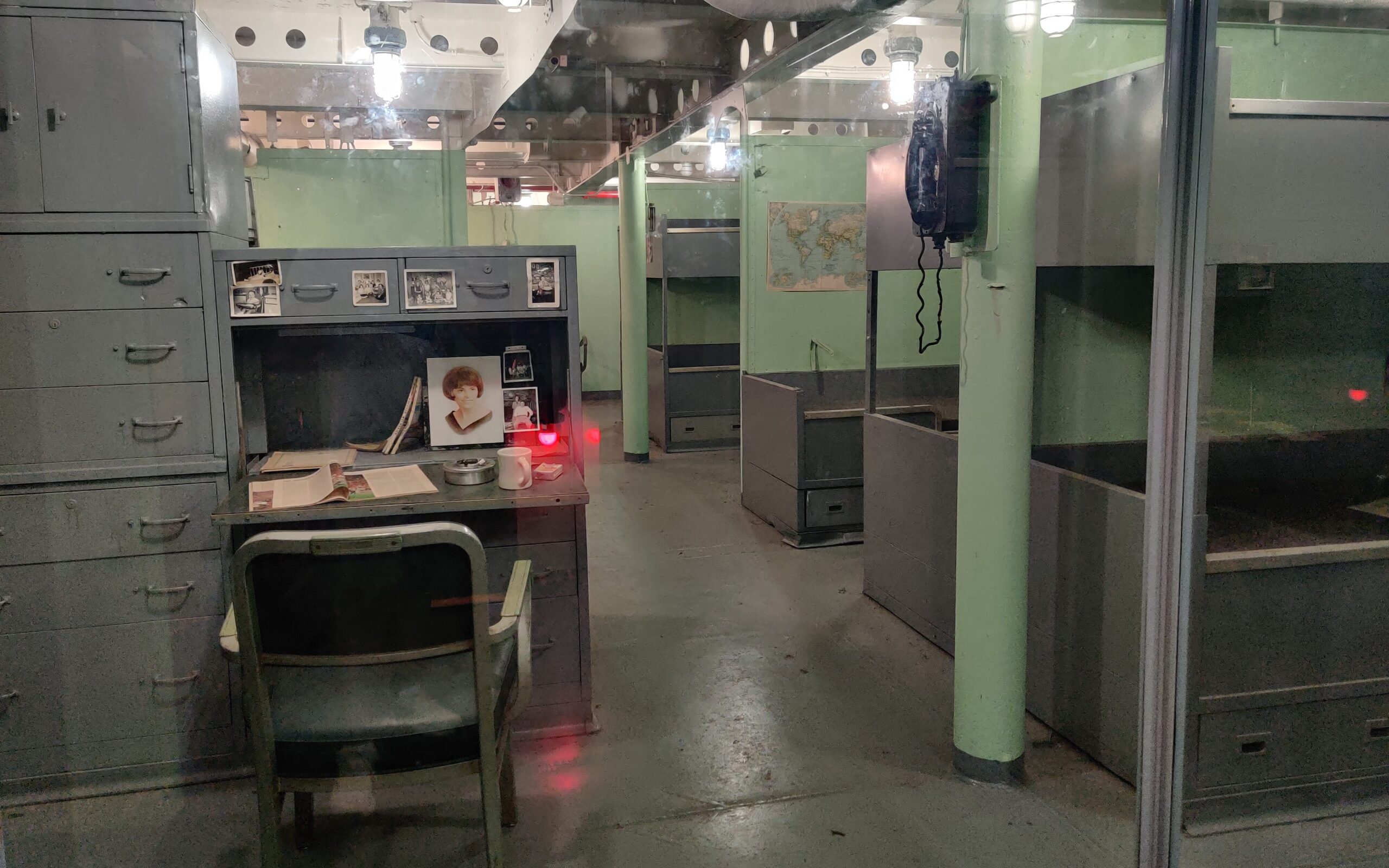
Some of the rooms are very tight quarters. I don’t think I would handle sleeping like this too well!
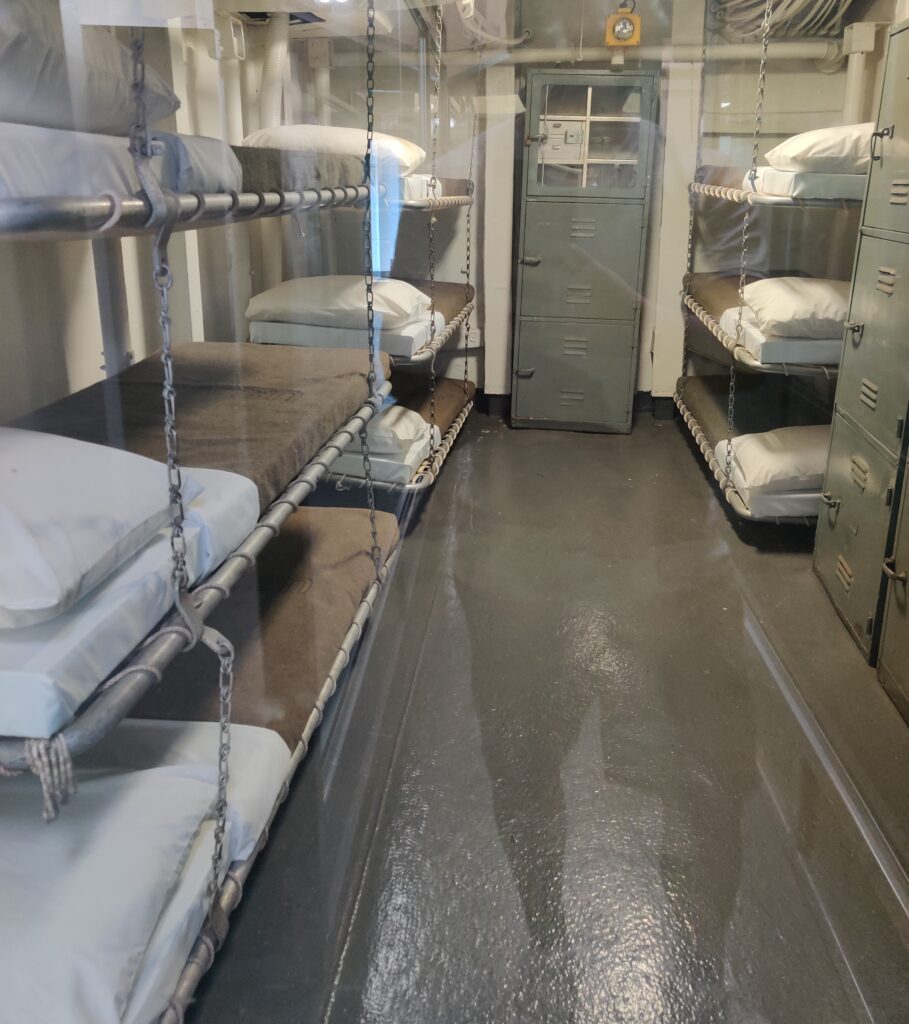
Finally, we get to the upper deck. Most of the planes sit here, you also can see the carrier’s old gun arrangements. The planes in the following group belong to Grumman, a major manufacturer at the time for naval jet aircraft.
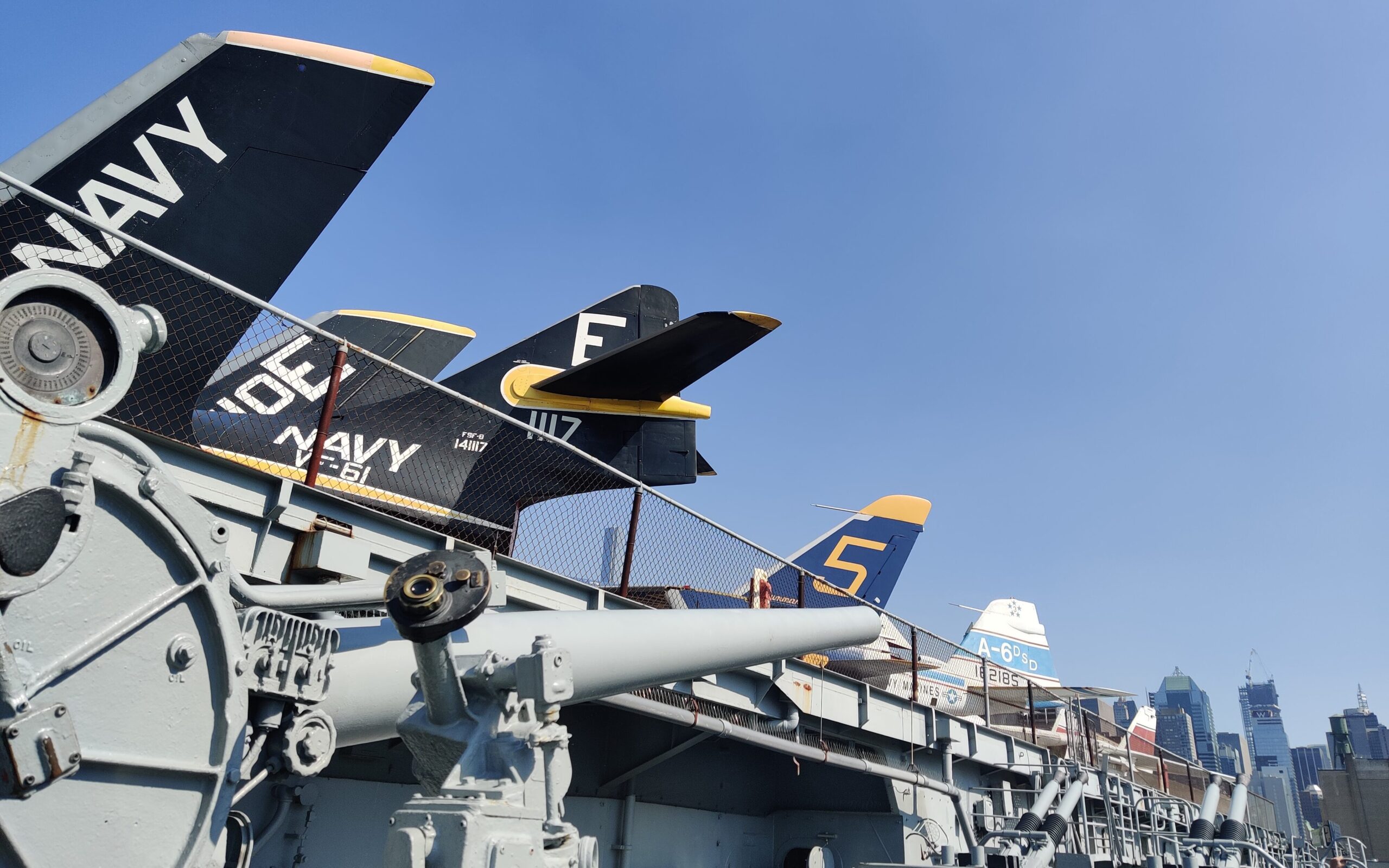
Korean War period aircraft were typically coated in a dark blue color. However, colorful accents would adorn Navy planes for many eras, indicating their distinct squadron, battle group, or home ship.
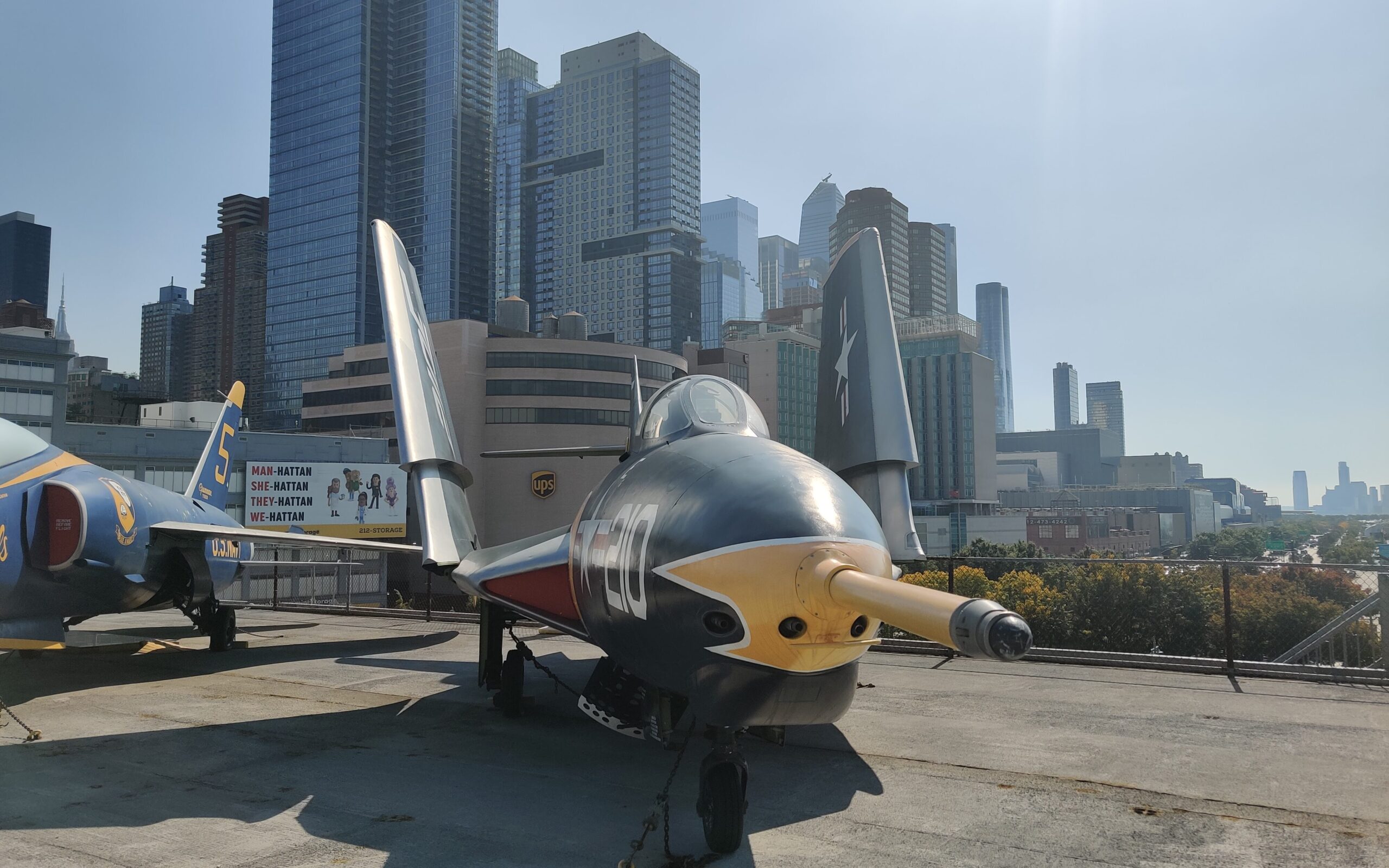
It was shortly after the Korean War when supersonic jet fighters became operational, and then standard, on US aircraft carriers. Supersonic flight represents flying faster than the speed of sound. I’m not sure if the Intrepid would have ever deployed supersonic aircraft however, given the demands of a carrier deck to safely launch and catch aircraft of such structure and power.
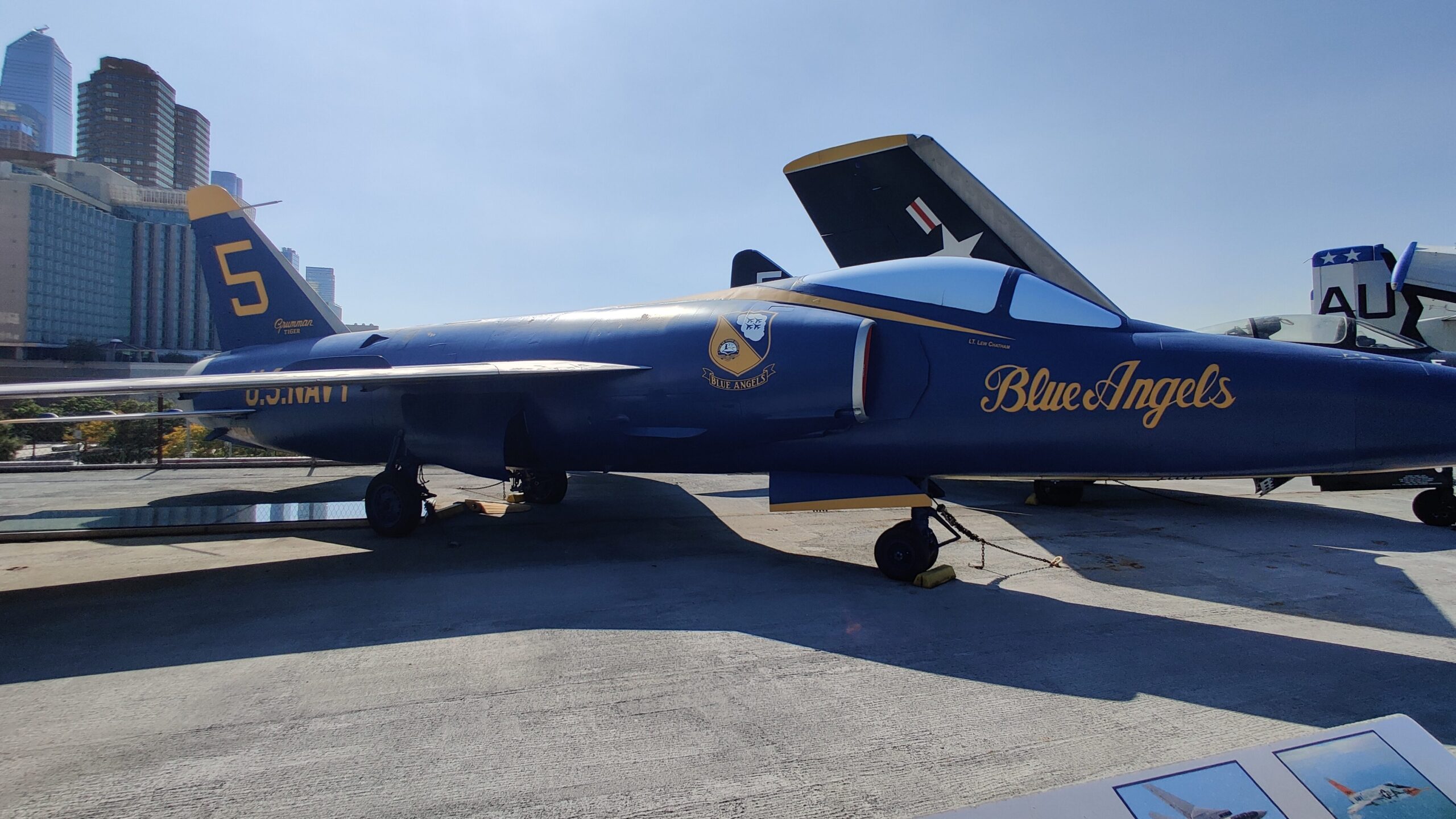
Even as aircraft became faster and more complex, there has always been a need for simple and efficient designs. Attack aircraft especially were designed for ruggedness and load bearing, while often flying at subsonic speeds (which is still very fast when observing by eye) without the immense cost of delivering cutting-edge performance.
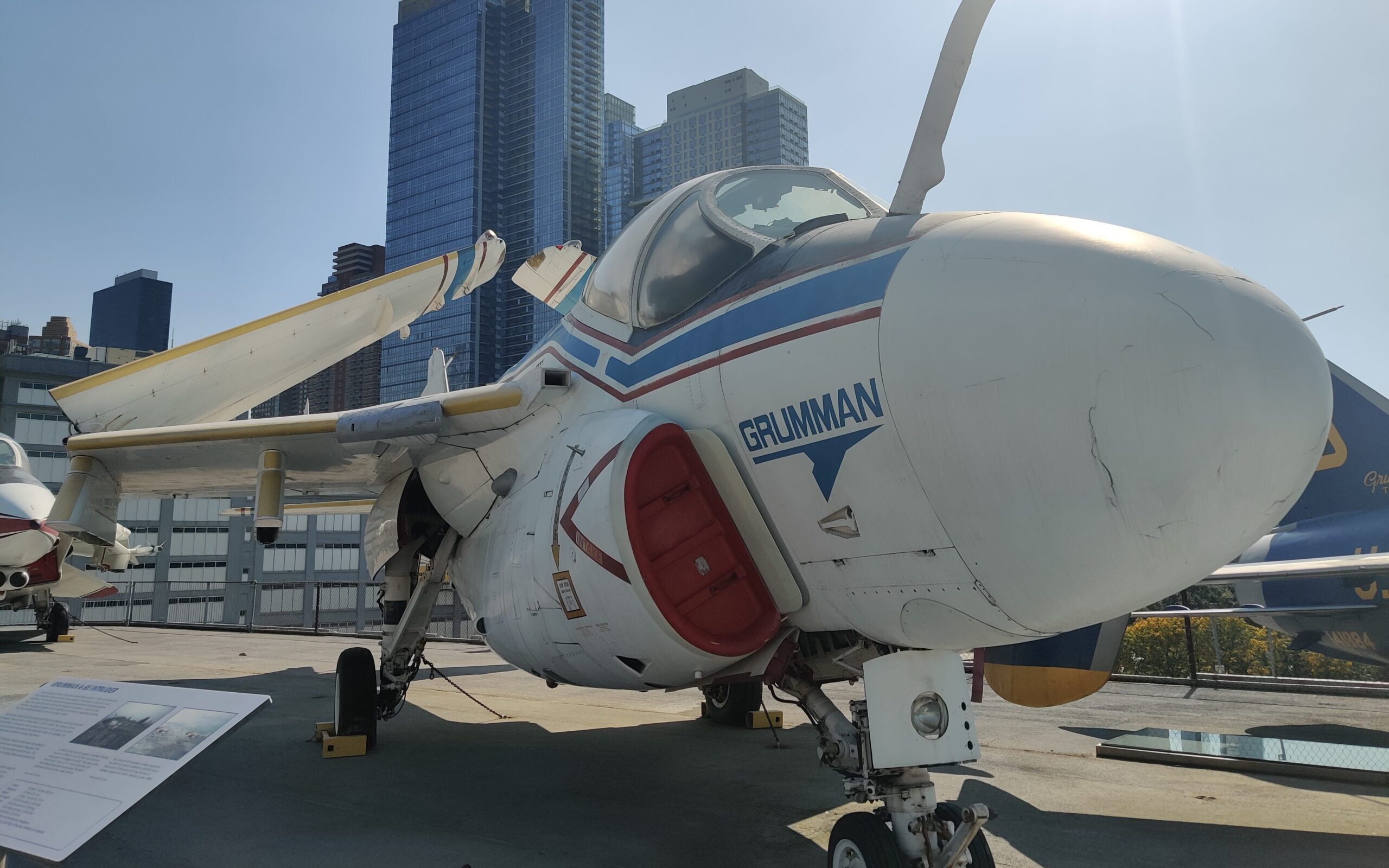
The 1950’s were really inventive for aircraft design, as the Space Race and Cold War were heating up, while jet technology was beginning to flourish. Many forward-thinking aircraft designs were tested (and many failed), providing new learnings on aerodynamics and propulsion.
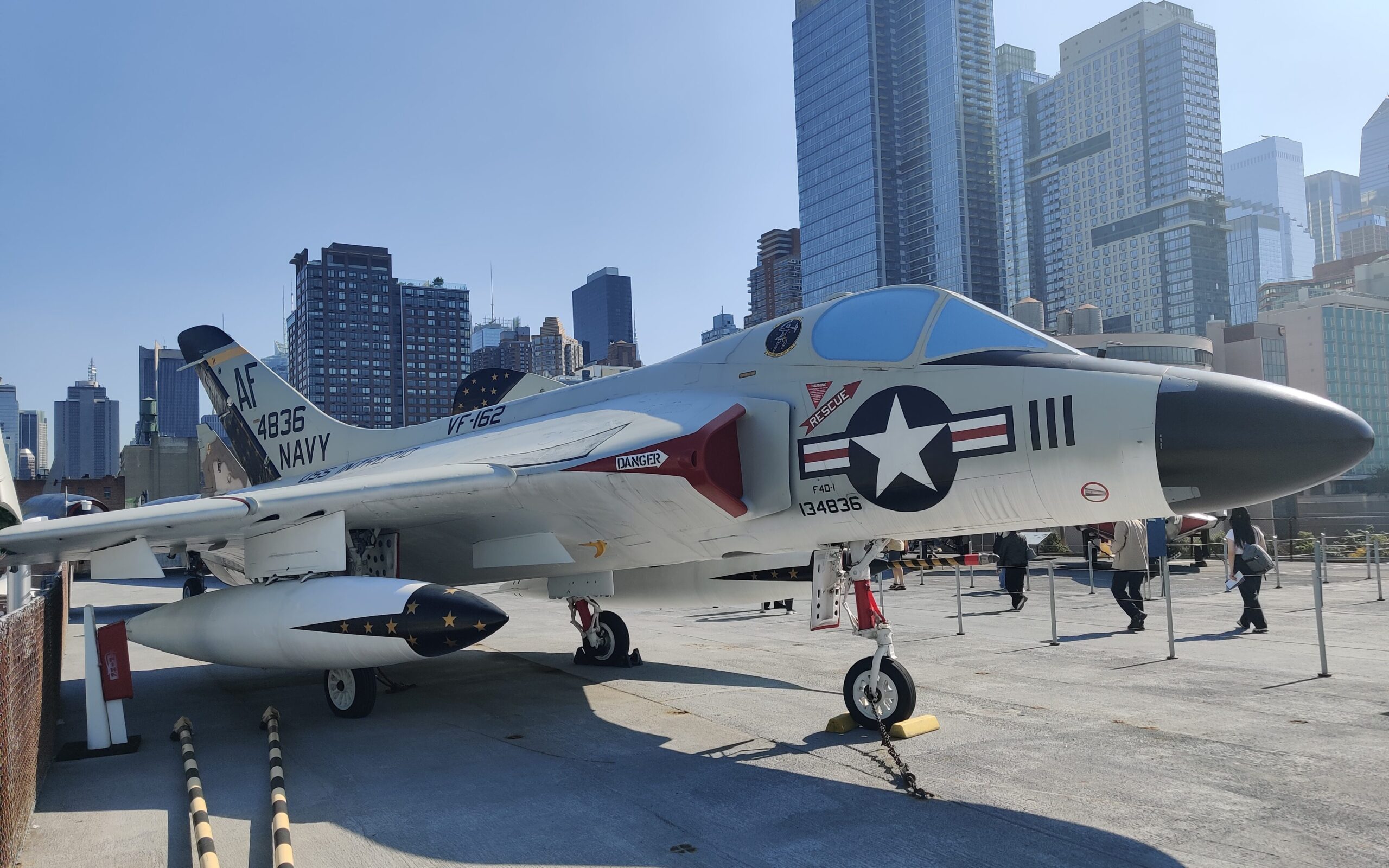
Engine power and performance are tremendous factors for jet design and success. Sometimes genius aircraft designs died with their engines… while the right engines (and number of engines) could propel unremarkable designs to successful careers.
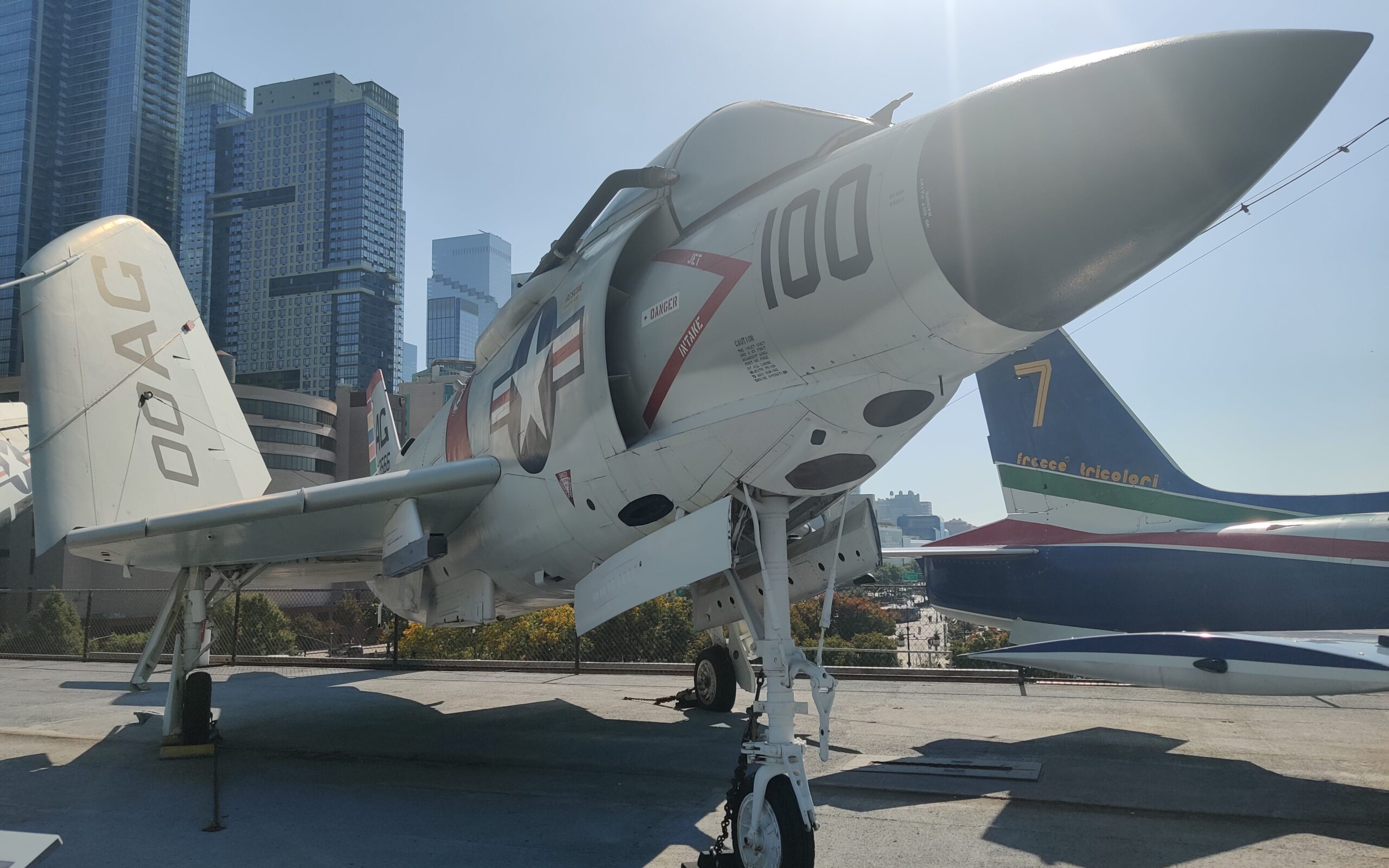
Alongside the advent of supersonic jet fighters, was the emergence of air-to-air missile combat. Missiles did not do away with cannons/guns immediately and completely, as some erroneously predicted at the time, but provided new and alarming threats to consider when in combat. To symbolize this evolution, one late 50’s design, the Vought F-8 Crusader, is nicknamed “the last gunfighter”, thanks to being one of the last fighter jets to use guns as its main armament. Just a couple years into the start of the Crusader’s career, McDonnell F-4 Phantoms would roam skies with all-missile armaments.
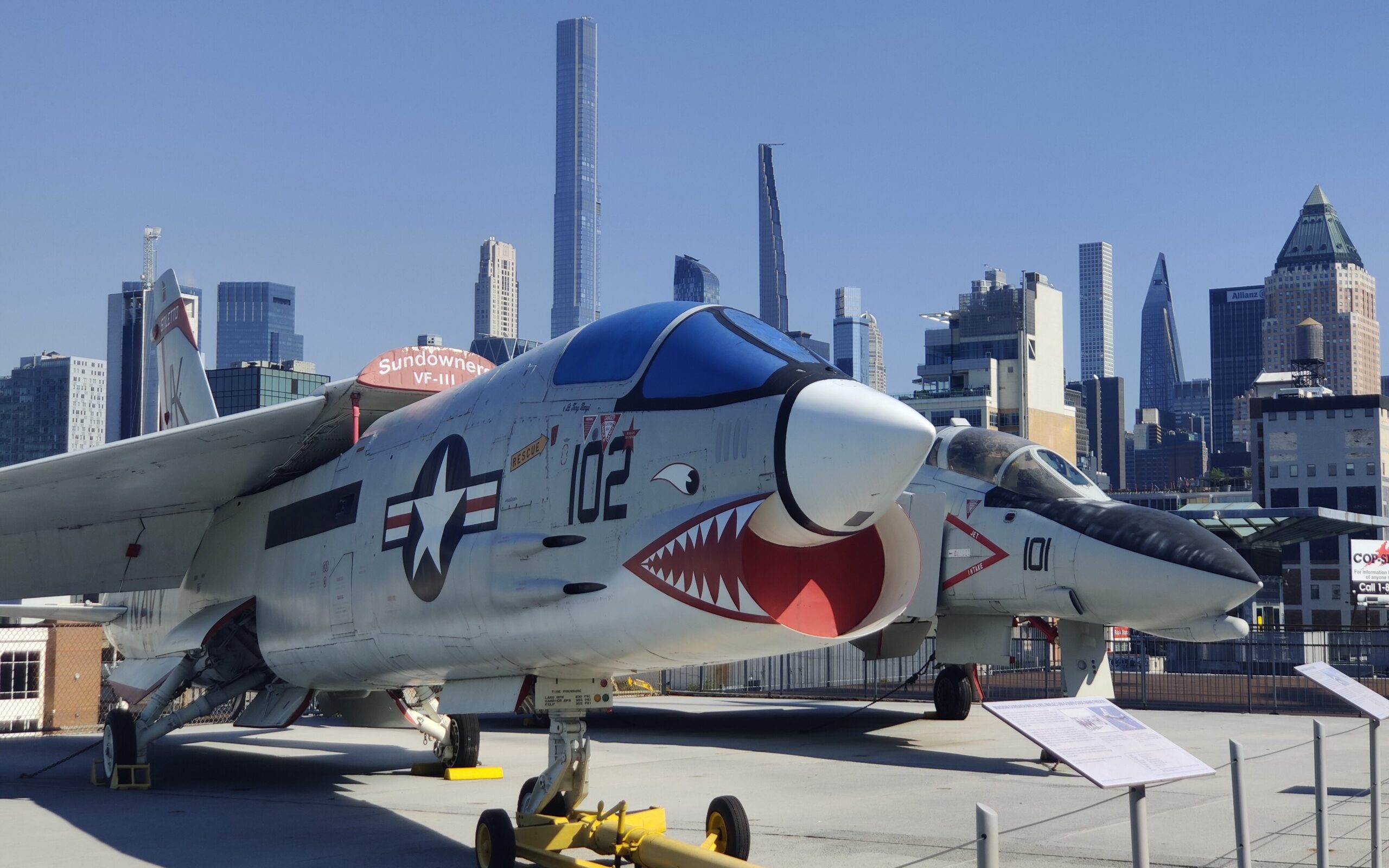
Borne out of a highly evolved McDonnell Demon design, McDonnell’s evolutionary F-4 Phantom brought about more than a key shift towards using missiles as main weapons. It housed powerful twin jet engines, replacing the standard single engine design philosophy in most fighter aircraft. Raw power and speed were unmatched with the Phantom, thanks to its engines. It also featured a two-man crew, comparatively large size and weight, and highly versatile ability to perform many roles.
The Phantom’s capabilities catapulted it a long and illustrious service career: it served with over a dozen different countries, became the primary fighter for both the US Air Force and US Navy (and Marines), and was produced over 5,000 times (the most of any American supersonic jet aircraft). During its heyday, the Phantom held numerous speed and altitude records. Despite being first introduced in 1960, it still serves in some air forces today.
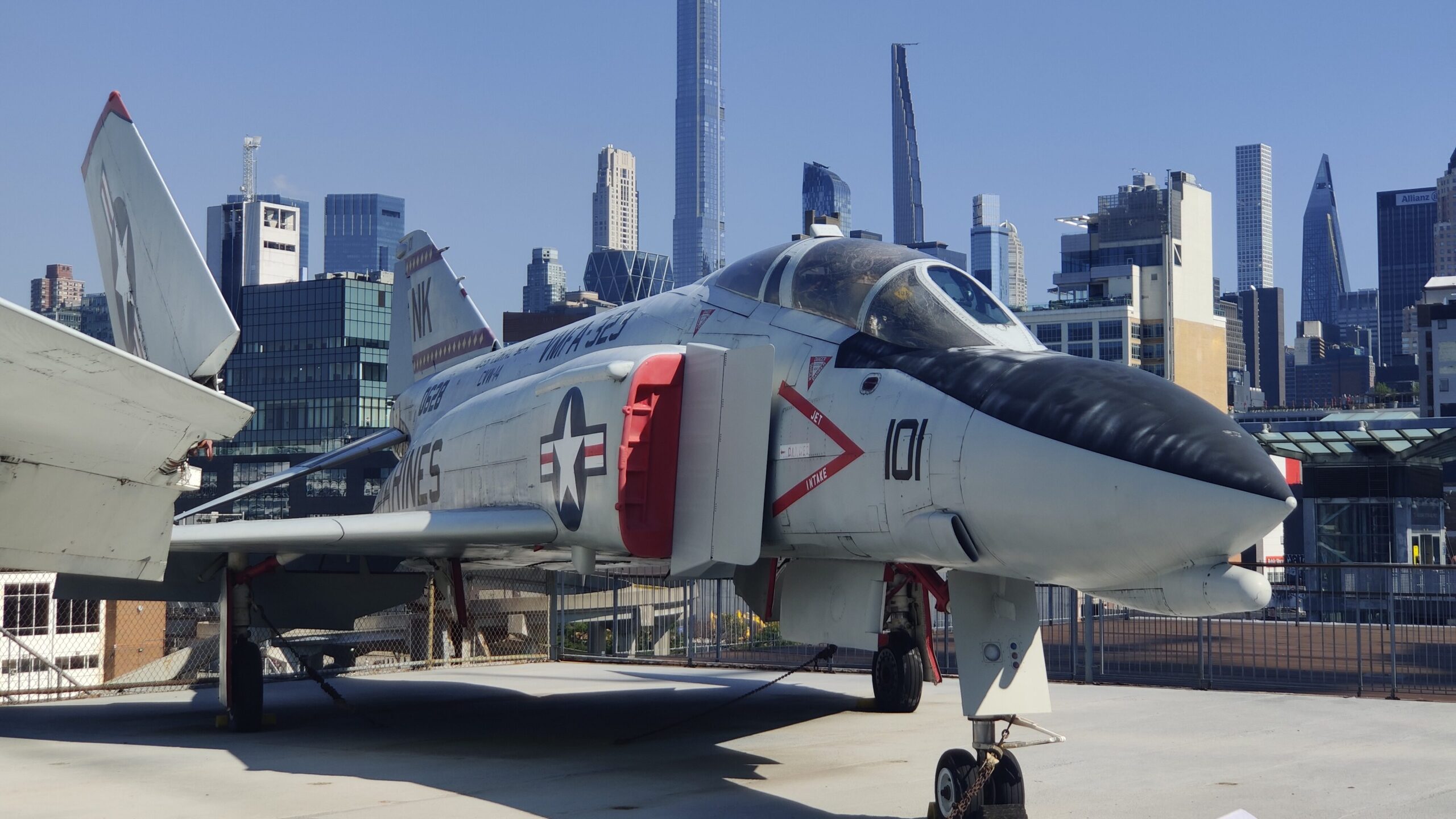
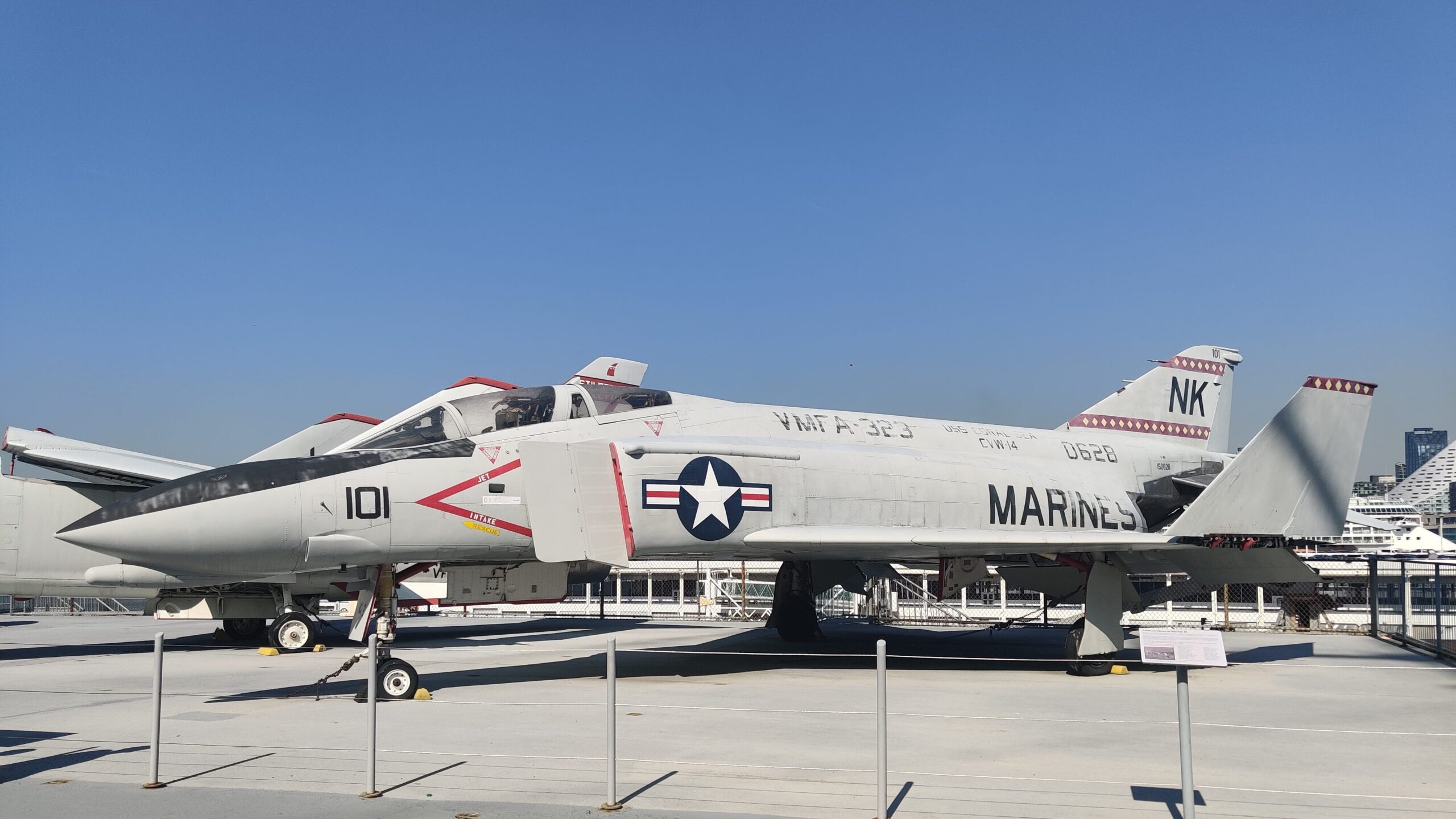
While the Crusader and Phantom made up the bulk of US Navy fighters during the Vietnam War, the Soviet Union’s supersonic rival, the MiG-21 (operated by North Vietnamese units), challenged US fighters throughout the war. Like the Phantom, the MiG-21 was enormously successful with many years of service. The Soviet design is the outright most produced supersonic jet in history. It also continues to serve in some air forces today.
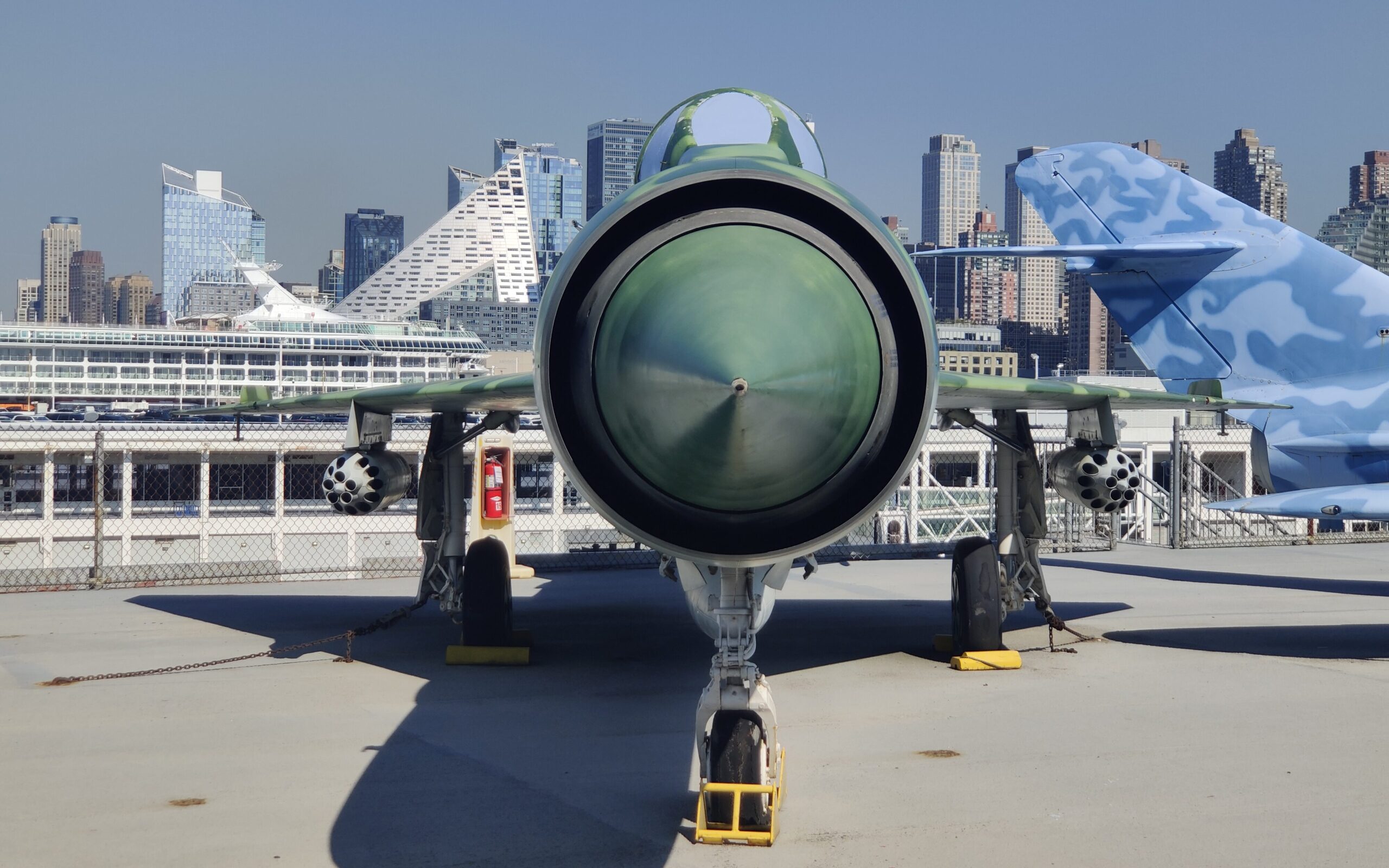
While the MiG-21, Crusader, and Phantom were battling in the skies over Vietnam, another plane was up in the sky at unreachable altitudes moving at over three times the speed of sound (Mach 3+, 2,200 miles per hour). The Lockheed A-12/SR-71 was a 1960’s design used only by the CIA and US Air Force. The design was so innovative for its time that the SR-71 still holds the world record for highest achieved airspeed by a manned jet. The A-12/SR-71 most certainly would never have taken off from a carrier though, so this particular display is more intriguing than relevant. Still, its all-black appearance, futuristic sleek design, and long forward fuselage are distinctly memorable, synonymous with impossible speed and stealth.
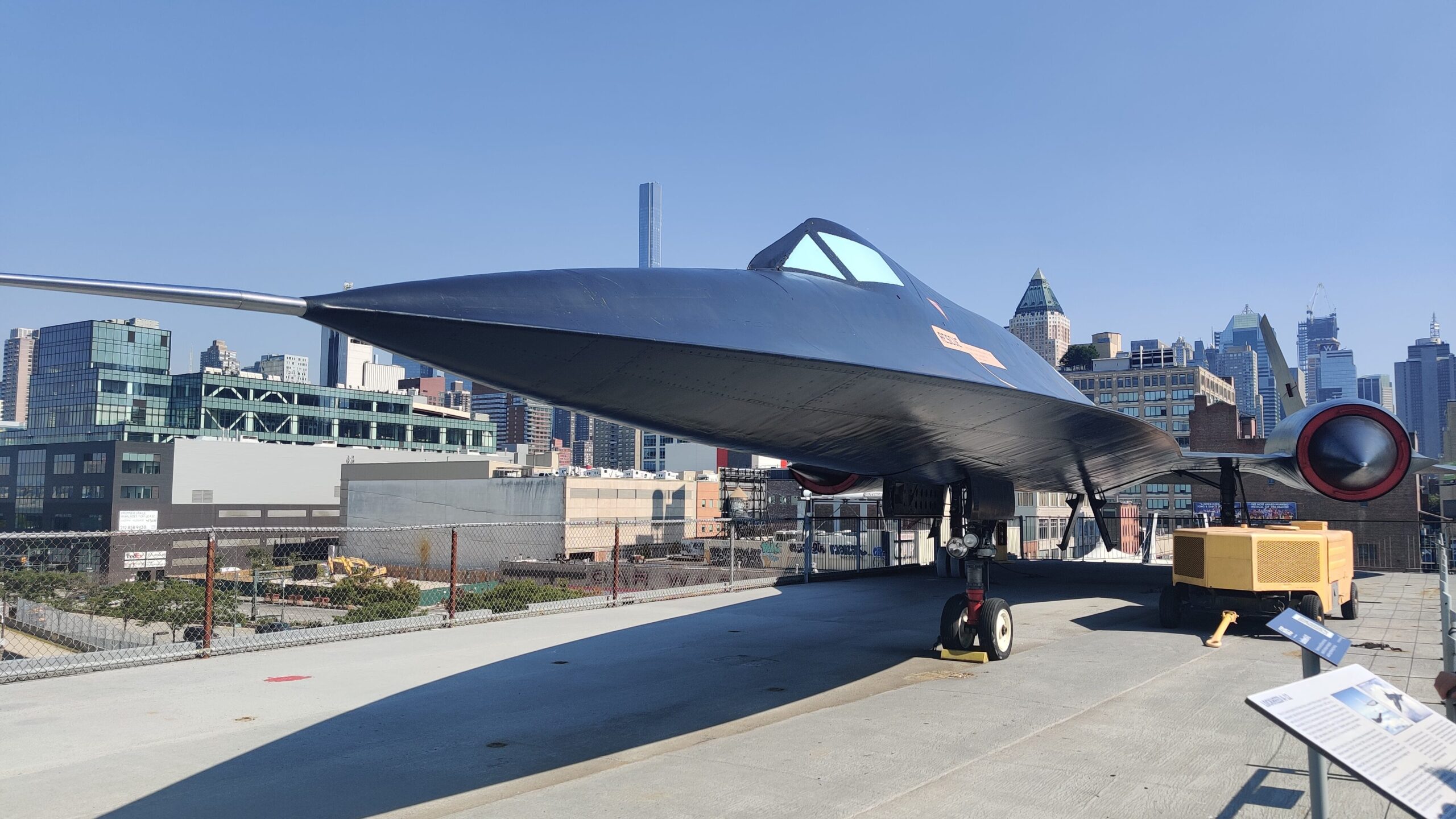
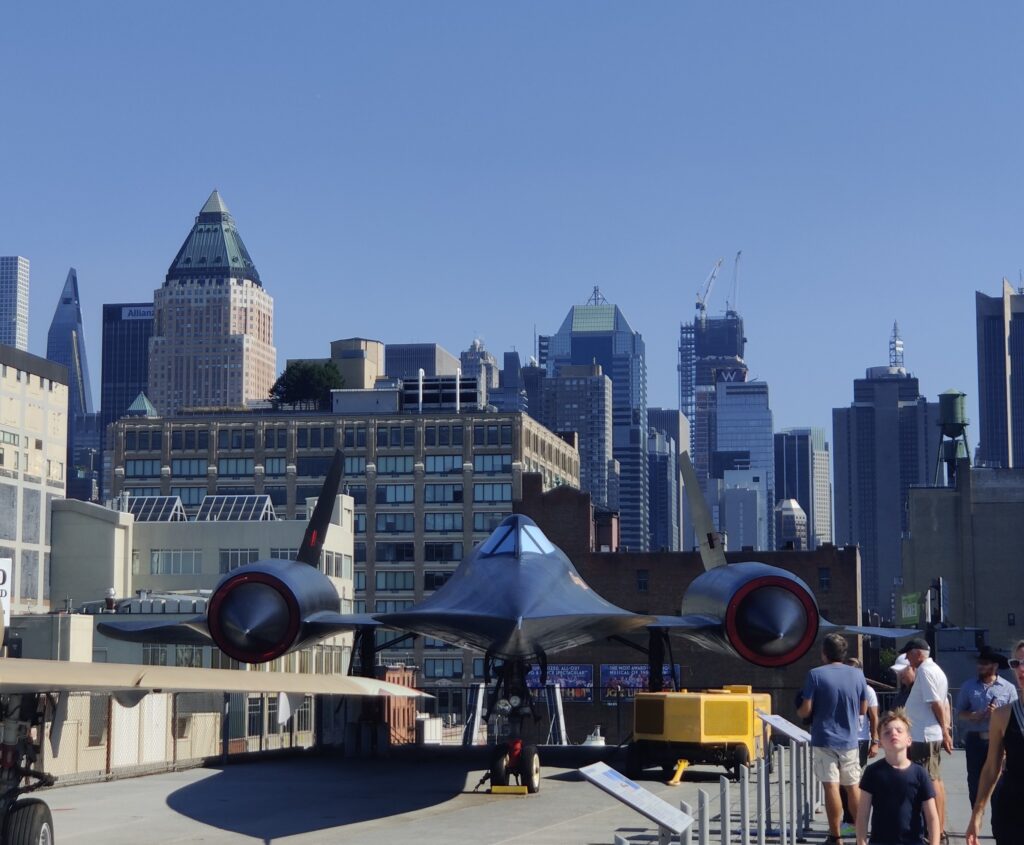
Fighter and jet design have certainly evolved since the 50’s and 60’s. But I think we will never again see the beautiful, bold, and downright unusual, designs of that period. Today’s aircraft are advanced evolutions of yesterday’s icons, but the roaring boom of experimental jet engine power is now in the rear-view mirror… now, designs focus on stealth, intelligent systems, efficiency, and electronic warfare. Maybe there are extreme designs still out there, but not yet de-classified?
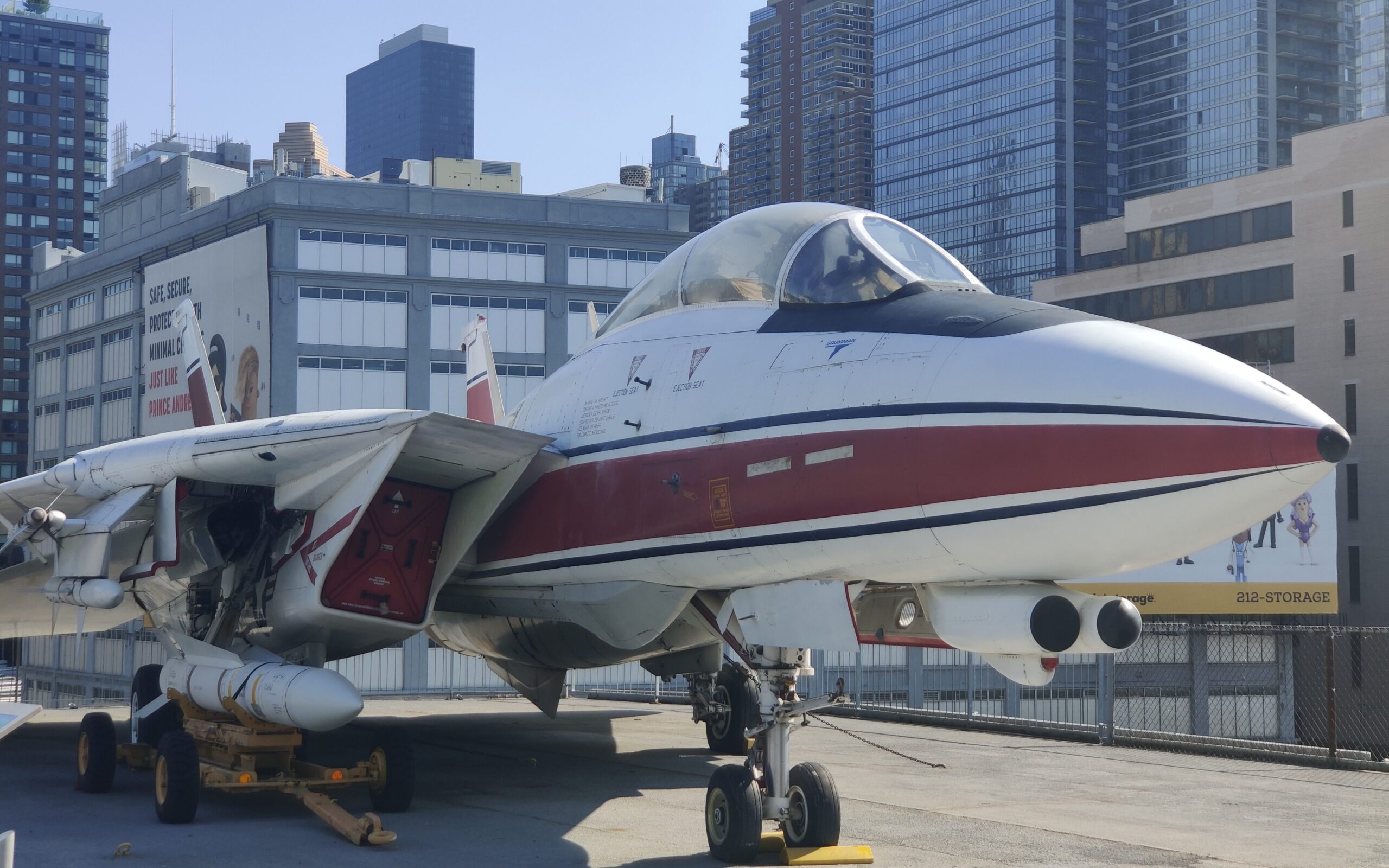
There are several more airplanes and helicopters I did not show here, so be sure to visit the USS Intrepid & Museum if you are ever in the area. It’s located in a pretty decent neighborhood in Manhattan, with lots of nearby things to see and do, just try to go when the weather is nice.


Leave a Reply